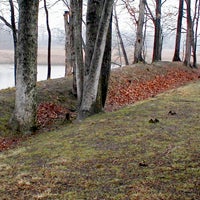Suffolk after the siege
Published 8:52 pm Saturday, May 4, 2013
Editor’s Note: To mark its 150th anniversary the Suffolk News-Herald has been featuring a multi-part series by Suffolk historian Kermit Hobbs detailing the 23-day Siege of Suffolk.
By Kermit Hobbs
Special to the News-Herald
Part 16: Epilogue
In spite of Gen. James A. Longstreet’s best efforts to bring his army to Gen. Robert E. Lee’s assistance in Northern Virginia, he was too late.
By the time his troops arrived, Lee’s Army of Northern Virginia had already defeated Union Gen. Joseph Hooker’s Army of the Potomac at the Battle of Chancellorsville. Lee’s victory over Hooker, as grand as it was, came at a great cost. Gen. Stonewall Jackson had been shot in the arm by his own men, and the wound would prove fatal.
Back in Suffolk, following the end of the siege by Longstreet’s Confederate forces, the Union authorities began to assess the recent events and to decide what their next steps would be. Indeed, they began to reconsider the necessity of occupying Suffolk, and they even questioned the wisdom of their ever occupying the town.

Union army earthworks can still be seen today, overlooking the Nansemond River in the Kingsboro neighborhood. The earthworks are among the reminders of the affect of the Civil War on Suffolk, especially during the Siege of Suffolk.
On May 10 Gen. John Dix wrote to Gen. Halleck, the General in Chief of the Union Army, with a request for advice on the matter.
“..I desire to present to you some views in regard to holding Suffolk and ask your decision… Suffolk is no longer [of] any use to us as a position for making friends of the secessionists. The population there and in the surrounding country are bitter and implacable….”
Gen. Halleck agreed, and the decision was made to withdraw the Union forces to Bowers Hill. There, they felt, they could more easily control the gateway to and from the southern interior.
During the last few weeks of town’s occupation, the Union soldiers spent their time destroying earthworks, taking up railroads, and burning more farmhouses.
Finally, on July 3, 1863, the last of the Union troops left Suffolk, much to the relief of the few people still living in the town.
On that same afternoon, many of the soldiers of Gen. Pickett’s division, the same ones who had manned the Confederate line on the Edenton Road and Somerton Road front, became famous.
They participated in the valiant but disastrous charge against the Union line on Cemetery Ridge in Gettysburg, Pa., that became known as Pickett’s Charge. Most historians consider this event to be the high-water mark of the Confederacy, the beginning of the end for the Confederate States of America.
A century and a half has passed since this tragic period of American history, and most evidence of it has been erased by the passing of time. But there are still a few reminders around Suffolk.
Union earthworks still overlook the Nansemond River behind River Point in Kingsboro, and there are short stretches of Union and Confederate trenches in many places in the woods around Suffolk.
Fort Stevens still overlooks the east side of the Nansemond River, and the remains of Fort Huger are still visible from the 13th hole of Nansemond River Golf Course. Part of Fort Rosecrans, one of the chain of Union forts surrounding Suffolk, is visible in the winter on the point just west of the Pitchkettle Road Bridge.
Riddick’s Folly, the headquarters of Gen. John J. Peck stands on North Main Street and has been carefully restored to its 19th-century appearance. There is graffiti left by Civil War soldiers on its walls, and there is a gallery of Civil War-related items on its top floor.
There are several good references available for further study of Suffolk’s Civil War history. Steve Cormier’s book, The Siege of Suffolk: The Forgotten Campaign is an excellent study of the wartime events, particularly from a military perspective.
Brian Wills’ fine book, The War Hits Home, deals with both the military events and the effects of the war upon the people who lived in and around Suffolk. Kermit Hobbs’ booklet, Storm Over Suffolk, gives a general overview of those same subjects.
For more in-depth study, the Official Records of the Union and Confederate Armies, the Official Records of the Union and Confederate Navies, and the Official Records Atlas of the Civil War are all available on CD-ROM. There are other publications by Suffolk Nansemond Historical Society and Riddick’s Folly at local gift shops that shed further light on these subjects.
Warning: If you start reading, you might not be able to quit.





